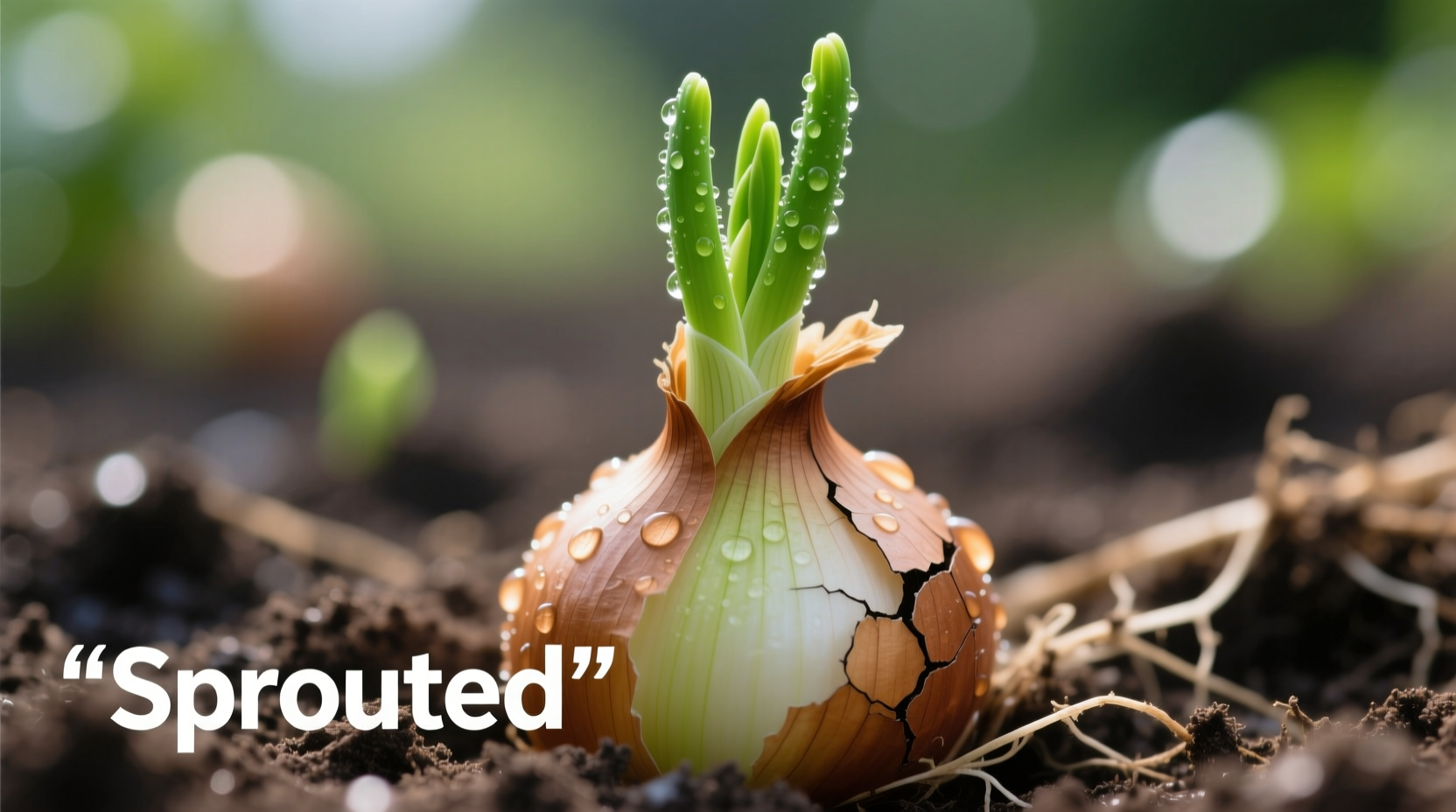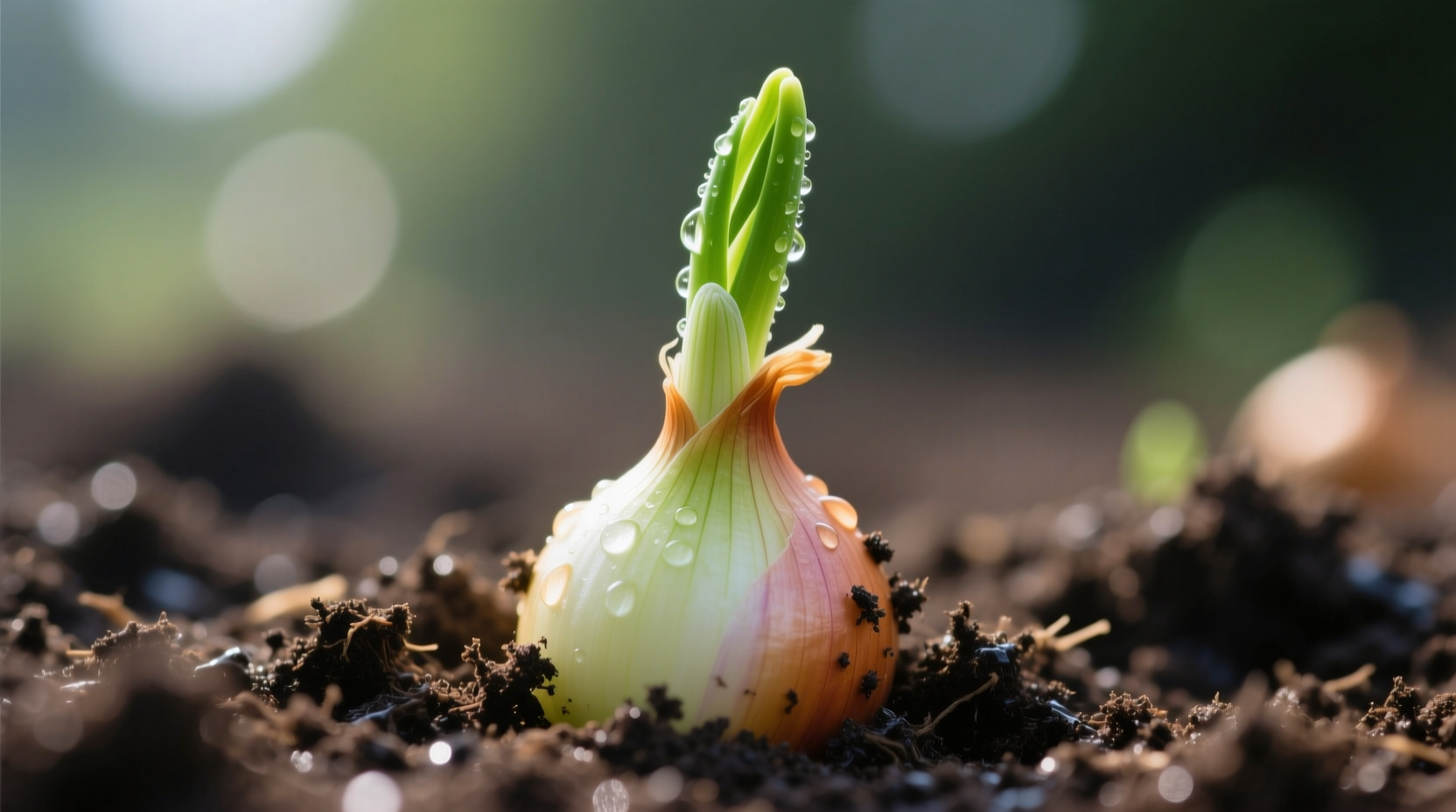Why Your Onions Are Sprouting (And What It Really Means)
That moment you open your pantry and find green shoots emerging from your onions isn't a kitchen disaster—it's a biological survival mechanism in action. Onions sprout when environmental conditions mimic spring, triggering their natural growth cycle. Unlike moldy or rotten produce, sprouting indicates your onions are still biologically active and generally safe for consumption.
The Science Behind Onion Sprouting: What's Really Happening
Onion bulbs contain dormant embryonic plants. When temperatures rise above 45°F (7°C) and humidity exceeds 65%, the bulb's internal hormones activate, redirecting stored energy toward growth. This process, called vernalization, converts fructose reserves into glucose to fuel the emerging shoot.
| Storage Condition | Sprouting Timeline | Bulb Quality Impact |
|---|---|---|
| Room temperature (70°F/21°C) | 2-3 weeks | Softening begins after 10 days |
| Cool pantry (55°F/13°C) | 4-6 weeks | Minimal quality loss for 3 weeks |
| Refrigerator (38°F/3°C) | 8-12 weeks | Optimal preservation for 2 months |
This USDA storage research confirms that proper temperature control significantly delays sprouting while maintaining nutritional value. The key distinction between safe sprouting and dangerous spoilage lies in texture—sprouted bulbs remain firm, while rotten onions develop soft spots and unpleasant odors.
Are Sprouted Onions Safe to Eat? The Food Safety Facts
According to FDA food safety guidelines, sprouted onions pose no health risks as long as:
- The bulb remains firm to the touch
- No mold or slimy texture appears
- They haven't developed a sour or ammonia-like odor
Nutritionally, sprouted onions actually increase their vitamin C content by up to 200% during the first week of sprouting, according to University of Minnesota Extension research. However, the bulb gradually softens as energy transfers to the green shoots, so use sprouted onions within 7-10 days for best quality.

3 Practical Solutions for Sprouted Onions
Immediate Use Strategy
When you discover sprouting:
- Cut off green shoots (save for regrowing)
- Peel and inspect the bulb for soft spots
- Use within 3 days in cooked dishes where texture matters less
The green shoots work perfectly in omelets, stir-fries, or as garnish—they have a milder flavor than regular green onions.
Regrow Green Onions in Water
This simple hydroponic method yields fresh green onions in 7 days:
- Cut 1 inch above root end, keeping roots intact
- Place in glass with ½ inch of water covering roots
- Change water every 2 days
- Harvest green shoots when 4-6 inches tall
University agricultural studies show this method produces continuous harvests for 3-4 cycles before bulb energy depletes.
Prevent Future Sprouting
Implement these storage techniques based on Oregon State University Extension recommendations:
- Store onions in mesh bags for optimal airflow
- Keep away from potatoes (they emit ethylene gas that accelerates sprouting)
- Maintain 32-45°F (0-7°C) temperature with 65-70% humidity
- Never refrigerate whole onions unless already sprouting
Advanced Storage Techniques from Food Scientists
Commercial growers use controlled atmosphere storage with 95% nitrogen to prevent sprouting, but home cooks can achieve similar results through these practical methods:
Temperature Threshold Management
Onions won't sprout when stored below 45°F (7°C). The critical transition point occurs between 45-55°F (7-13°C)—a range where sprouting accelerates rapidly. Use a refrigerator's crisper drawer (typically 38-42°F/3-6°C) for sprouted onions you won't use immediately.
Varietal Selection for Long-Term Storage
Yellow storage onions (like Yellow Sweet Spanish) last 2-3 times longer than sweet varieties. According to USDA agricultural data, pungent varieties with higher sulfur content naturally resist sprouting due to their chemical composition.
When to Discard Sprouted Onions
While most sprouted onions remain usable, discard them immediately if you notice:
- Soft, mushy texture throughout the bulb
- Dark spots or mold growth
- Strong ammonia-like odor
- Excessive root growth with shriveled bulb
These indicate advanced decomposition where harmful bacteria may be present, making the onions unsafe regardless of sprouting.











 浙公网安备
33010002000092号
浙公网安备
33010002000092号 浙B2-20120091-4
浙B2-20120091-4